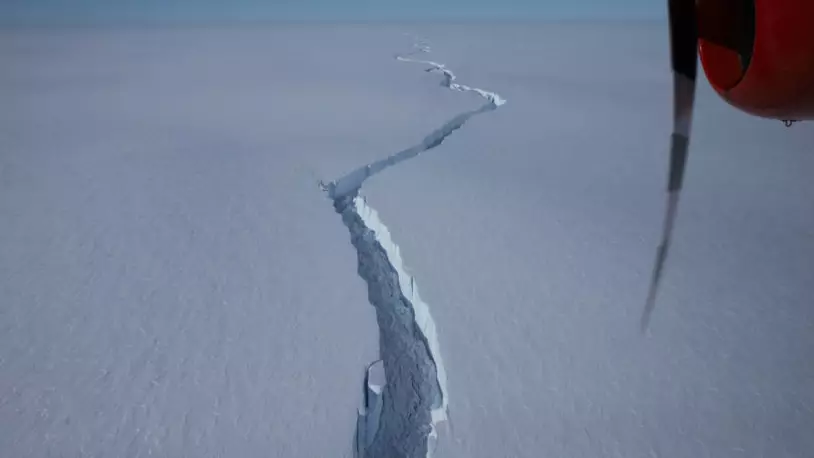
An iceberg bigger than New York City has broken off in Antarctica. Watch the behemoth ice block here:
The iceberg - which is the size of Bedfordshire, if you prefer a UK size comparison - broke away on the Brunt Ice Shelf on Friday (26 February), near Britain's Halley research station. The station was empty though, and no lives were at risk.
Advert
If you don't know how big New York City is - or Bedfordshire, come to that - I'll just give it to you straight: this iceberg measures 490 square miles (1270 square kilometres). It's massive.
Scientists had been expecting a big calving - the process by which ice blocks break away - for at least a decade, having observed large cracks developing in the ice shelf.
Professor Dame Jane Francis, Director of British Antarctic Survey (BAS), said: "Our teams at BAS have been prepared for the calving of an iceberg from Brunt Ice Shelf for years.
"We monitor the ice shelf daily using an automated network of high-precision GPS instruments that surround the station, these measure how the ice shelf is deforming and moving. We also use satellite images from ESA, NASA and the German satellite TerraSAR-X.
Advert
"All the data are sent back to Cambridge for analysis, so we know what's happening even in the Antarctic winter, when there are no staff on the station, it's pitch black, and the temperature falls below minus 50 degrees C (or -58F)."
The impact of calving events like this can be unpredictable, and BAS will continue to monitor it.
Francis said: "Over coming weeks or months, the iceberg may move away; or it could run aground and remain close to Brunt Ice Shelf.
Advert
"Halley Station is located inland of all the active chasms, on the part of the ice shelf that remains connected to the continent. Our network of GPS instruments will give us early warning if the calving of this iceberg causes changes in the ice around our station."
Indeed, the calving could cause further blocks of ice to break away from the ice shelf.
Simon Garrod, Director of Operations at British Antarctic Survey, said: "This is a dynamic situation.
"Four years ago we moved Halley Research Station inland to ensure that it would not be carried away when an iceberg eventually formed. That was a wise decision.
Advert
"Our job now is to keep a close eye on the situation and assess any potential impact of the present calving on the remaining ice shelf.
"We continuously review our contingency plans to ensure the safety of our staff, protect our research station, and maintain the delivery of the science we undertake at Halley."
Featured Image Credit: British Antarctic SurveyTopics: World News
